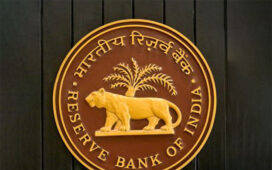In the world of Forex, one of the most powerful and riskiest tools is leverage. It attracts many investors by promising to amplify potential gains with a relatively limited starting capital.
Yet behind this apparent ease lies a complex instrument that can also turn a small loss into a crushing defeat.
Understanding how leverage works and how to integrate it intelligently into a trading strategy is therefore essential for any investor.
What is leverage in Forex?
Leverage means borrowing funds from your Broker to open a position larger than the capital actually available.
On the Forex market, leverage ratios can be very high: 1:30 for retail traders in Europe (according to ESMA regulations), but up to 1:100 or even more in other, less regulated jurisdictions.
In concrete terms, with a margin of 1,000 euros and a leverage of 1:30, a trader can control a position of 30,000 euros on a currency pair such as EUR/USD.
This multiplier effect is seductive, as a small favorable market movement can generate substantial gains. But the same applies to losses, which are amplified in the same proportions.
The advantages of leverage
The main advantage of leverage is that it makes Forex trading accessible to investors without large amounts of capital.
It also makes it possible to exploit small price variations, which are common on the currency market, and to transform movements of a few pips into tangible profits.
For experienced traders, it’s also a way of optimizing capital management. Rather than tying up a large proportion of their funds, they can allocate their resources more efficiently across several positions.
Underestimated risks
However, leverage is a double-edged sword. A position that is too large in relation to capital can be liquidated in seconds if the market moves in the wrong direction.
Many beginners confuse the use of leverage with the promise of easy gains, forgetting that it actually multiplies risk.
This is why regulators limit the amount of leverage allowed, to protect retail investors.
Forex is a highly liquid and extremely volatile market. Economic announcements, central bank decisions and geopolitical tensions can provoke sudden and unexpected movements.
Without strict risk management, leverage can turn a promising strategy into a resounding failure.
How can leverage be integrated into a Forex strategy?
The key is prudence and discipline. Using moderate leverage (e.g., 1:5 or 1:10) often enables a balance to be struck between potential gains and risk control.
The systematic use of stop-loss orders is essential to protect capital against adverse movements. It is also advisable never to commit more than a small portion of your portfolio to a single position.
Finally, you should adopt a progressive approach. First test leverage on a demo account, analyze the results, then adjust your strategy before investing real money.
A well-informed trader sees leverage not as a promise of quick profits, but as just another tool in his strategic toolbox.
Conclusion
Leverage is at the heart of Forex trading. It embodies both the appeal and the danger of this market. It offers the possibility of turning limited capital into significant gains, but also raises the risk of rapid and massive losses.
For investors, the real strategy is not to seek the highest leverage, but to know how to use it wisely, within the framework of rigorous risk management.
As is often the case in finance, discipline and patience take precedence over the temptation of immediate profits. Leverage should never be a shortcut, but a controlled tool in the service of a well-thought-out strategy.



